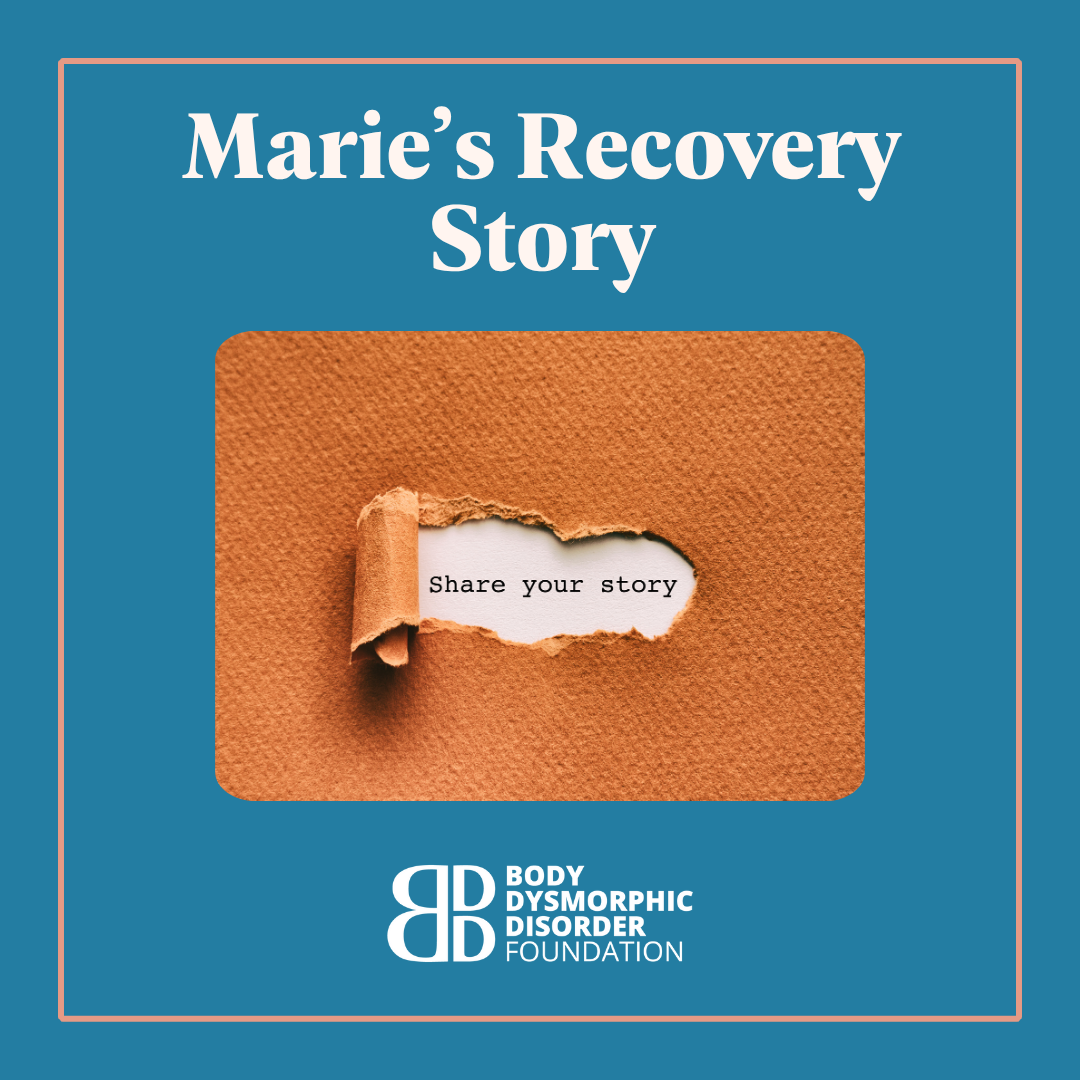I first realised I had Body Dysmorphic Disorder (BDD) when I came across Scott Granet’s ‘Personal Journey with BDD’ on YouTube while googling my symptoms. Everything he said made sense to me. It was like a lightbulb moment if there ever was one. I remember showing my partner the video and just repeating, ‘this is me!’
For me, BDD has always centred on my hair. Over time, what started as insecurity turned into a relentless obsession. My days were dominated by mirror checking – not just the bathroom mirror, but oven doors, windows, car reflections, anything that might reassure me or confirm my worst fears. I would measure both sides of my hair to make sure they were even, repeatedly comb and re-comb, snip at my bangs with scissors, and compare myself endlessly to other people. I studied strangers in the street, celebrities on TV, even my own photos from years earlier, constantly searching for evidence that I was either acceptable or deeply flawed.
The compulsions didn’t stop there. I rotated between multiple hairdressers, often booking unnecessary appointments in the hope that a ‘fix’ would finally make me feel okay. I stockpiled styling products, hairdryers, vitamins, and treatments. I sought reassurance from family and friends, asking them if I looked alright, or making comments like ‘look what the wind has done to my hair’ just to hear it was acceptable. I avoided photographs, windy days, or hats that might ruin my hairstyle.
This wasn’t vanity. It was survival. My hair was the first thing on my mind when I woke up and the last thing I thought of before I went to sleep. At my worst, it consumed 90 – 95% of my daily life. When my hair felt ‘wrong’, I felt worthless, unlovable, and unsafe. My core belief became: If my hair is good, everything will be good. If my hair isn’t, life has very little meaning.
Diagnosis and Seeking Help
The turning point came when I ordered Scott Granet’s book Body Dysmorphic Disorder, Mine and Yours. I completed the exercises and finally felt armed with the right words to explain what I was going through. I remember walking into a psychologist’s office with the book in hand and saying, ‘this is what I have. She dismissed me, wanting to do talk therapy instead. It was crushing, because I knew that wasn’t what I needed.
I didn’t give up. Eventually, I found a psychologist who understood Exposure and Response Prevention (ERP). At first, even she wasn’t sure, she thought my symptoms were “just OCD.” But after our second session, she acknowledged that while my behaviours were obsessive-compulsive, the fact that they were all tied to a perceived flaw aligned directly with BDD. At the same time, I started taking SSRI medication. I can honestly say I would not have been able to do ERP without it. ERP is brutally hard work – resisting the urge to check or fix, sitting with the anxiety, letting the thoughts come and go. The medication didn’t ‘change who I was’, it simply dulled the edges enough that I could tolerate the exposures and break the cycle. As my GP told me when I asked if the meds would make me different: “They’ll just help you get back to being the person you were before.”
Therapy gave me practical coping strategies: limiting mirror checking, resisting reassurance seeking, cutting down avoidance, and leaning into values-based living. Progress showed itself in small moments – being able to leave the house without checking my hair a dozen times, or tolerating discomfort when my hair wasn’t sitting ‘perfectly’.
The biggest change was learning that my worth is not dictated by my hair. My advice to anyone considering help is this: to go for it and reach out for support. If you can, find a therapist who who understands BDD or ERP, and don’t be afraid of medication. With the right combination, change is possible.
Progress
It has now been three years since my initial diagnosis, and my life has improved immensely. I am no longer stuck in constant thought loops. I can enjoy time with my family, focus on my work, and live without BDD dictating every waking moment. Recovery, though, is ongoing. I can’t afford to ‘drop the ball.’ I still face challenges around haircut time, which almost always trigger anxiety and occasionally relapses. I’ve had two or three relapses this past year, but compared to life before treatment, that’s minimal. The difference now is that I can manage them: I practice exposures, I resist compulsions (mostly), and I remind myself not to beat myself up when I slip.
Medication continues to play a role, as does ERP. Even when I feel ‘good’, I know it’s important to keep up the work – to avoid sliding back into rituals, to practice resisting urges, and to live according to values rather than appearance. I spend less time engaging with rituals and more time being present with my family. I’ve learned that I am more than my hair. I can still be a loving mother, wife, daughter, and friend regardless of how I look. Recovery hasn’t meant eliminating bad days, but it has given me back my quality of life
If there’s one message I’d want someone else with BDD to take from my story, it’s this: you’re not alone, and you’re not broken. There is hope, and there is help. With the right treatment and support, life can get better – not perfect, but real, meaningful, and worth living.

